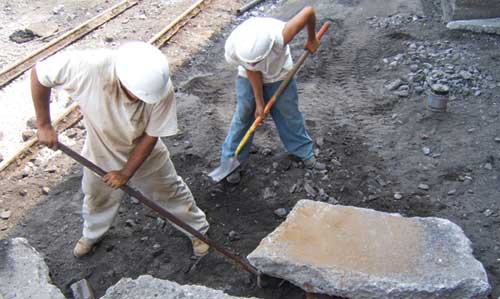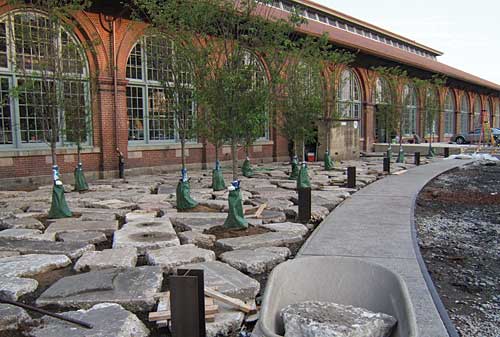Toward a Cybernetic Site
From impervious to pervious at Philadelphia's Navy Yard
The idea of the pristine site in America is most likely a thing of the past. Even Government Canyon, as lush and bucolic as it appears, experiences the aftereffects of nearby suburban sprawl development. While Sidwell exposes the constructed nature of landscape most apparently, the Indianapolis park development cannot escape its industrial legacy, where the site's topography represents layers of decisions made for various economic reasons decades ago. These embedded narrative threads-landscape histories made evident through the ingredients of nature-form the working methodology of Charlottesville, Virginia−based D.I.R.T. Studio. The studio's two landscape architects, Julie Bargmann and Christopher Fannin, approach each site design as an investigation of existing conditions, with the goal of reconfiguring those into an emergent, new condition. "These postindustrial places have these echoes and we have to find in them the transformative agent that makes them relevant today," Fannin says. "We also work with the premise that nothing leaves the site."
|
Â
D.I.R.T.'s design for the Navy Yard in Philadelphia, which included a courtyard for the Urban Outfitter's retail group, incorporated artfully demolished concrete chunks from an existing impervious parking lot that were reinstalled in a layer of porous gravel around newly planted trees-water can now flow freely into the ground. Bargmann notes of the project, completed in early 2006, "This is not high technology, just a new way of building." As American developers return to the city as the new territory of expansion, such innovative ways of designing for and building on a site-of understanding the baseline of what constitutes the inhabited natural world in a technological age-will certainly figure greatly in the success or failure of any venture. The real question is whether architects will help people see this, or construct another barrier.
Â










